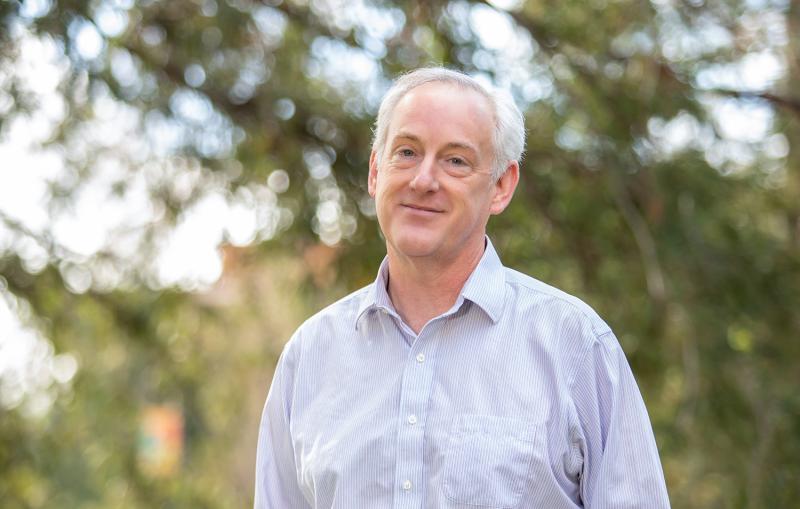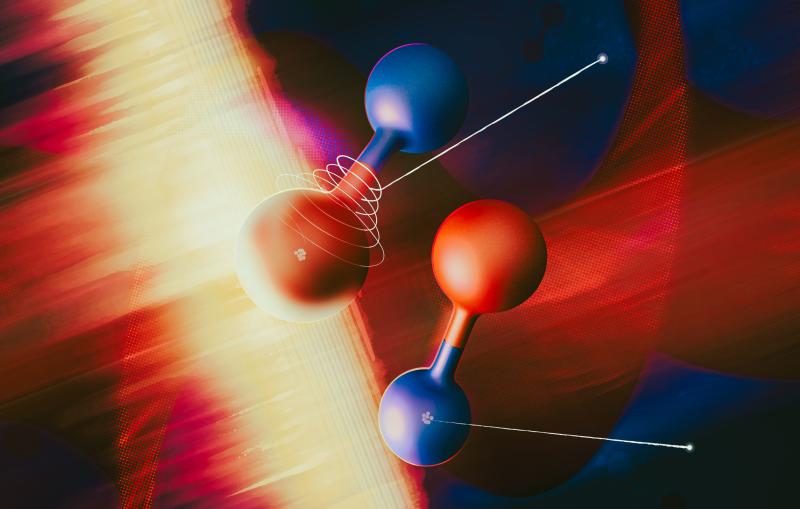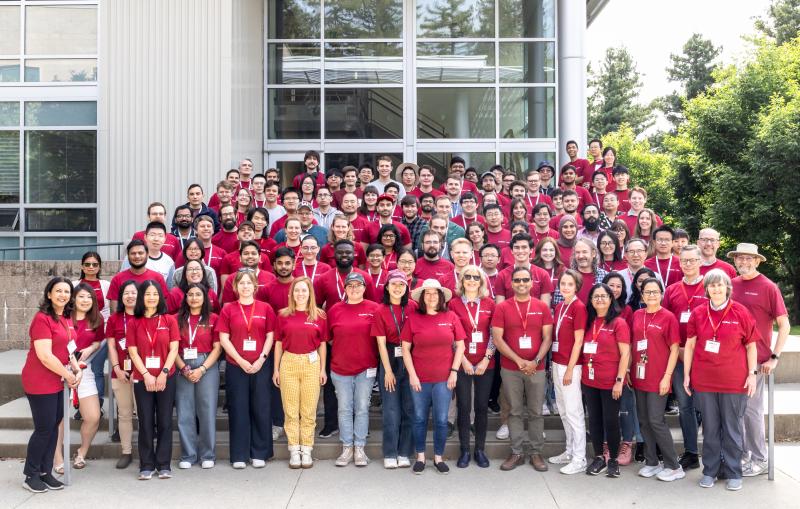SLAC Welcomes Professor and Chemical Sciences Division Director Tony Heinz
Noted Researcher Will Lead Work on Novel Nanoscale Materials
Tony Heinz, a scientist known for exploring the properties of nanoscale materials and developing important new tools for that exploration, has joined the Department of Energy’s SLAC National Accelerator Laboratory as a professor of photon science and Stanford University as a professor of applied physics. He will also lead the SLAC Chemical Sciences Division.
While his position became official in January, he will spend the next few months wrapping up his research at Columbia University, where he has been the David Rickey Professor of Physics and Electrical Engineering, and moving operations into lab space being readied on the Stanford and SLAC campuses.
“As someone who grew up in Northern California and attended Stanford and Berkeley, I am really looking forward to being back in the Bay Area,” Heinz said. “It’s a beautiful part of the world, a very exciting one in terms of science and technology, and also one with family and friends. I am delighted to have the opportunity to join the research activities at SLAC and Stanford.”
SLAC Lab Director Chi-Chang Kao said, “Tony is a world leader in optics and ultrafast experimental techniques, and has made seminal contributions in many areas of materials and chemical sciences. His efforts will significantly enhance and expand the growing ultrafast research at SLAC.”
A Focus on the Very Small
Heinz grew up on California’s Monterey Peninsula, earned a bachelor’s degree in physics at Stanford and got a PhD in physics at the University of California, Berkeley. He began his career in the research division of IBM’s T.J. Watson Research Center in New York, and in 1995 joined Columbia as a professor of physics and electrical engineering. He has served as scientific co-director of the Columbia Nanoscale Science and Engineering Center, which was funded by the National Science Foundation, and the Columbia Energy Frontier Research Center, funded by DOE.
His research has focused on using powerful beams of light to probe the electronic and vibrational properties of various nanoscale materials. These include graphene, a form of pure carbon with a honeycomb structure just one atom thick; carbon nanotubes, which are essentially graphene sheets rolled into tubes; and new semiconductors that come in atom-thick layers. All hold tremendous promise for creating advanced technology for practical applications such as computing and energy production and storage.
SLAC has two X-ray light sources that are used in this type of research: the Linac Coherent Light Source (LCLS) and Stanford Synchrotron Radiation Lightsource (SSRL), both DOE Office of Science User Facilities. Heinz is a member of the Stanford PULSE Institute, a joint SLAC/Stanford research center that uses the LCLS’s brilliant pulses to study materials at extremely small and ultrafast scales, revealing how they work at an atomic level and how their properties change over time.
The Right Tools for the Job
Heinz is also known for helping to develop new techniques for studying nanoscale materials, including a new type of laser spectroscopy for probing the surfaces of materials and the interfaces between them. Those methods have been widely adopted in laboratories worldwide, according to the International Commission for Optics, which awarded him the Ernst Abbe Medal in 1995.
“Solving important scientific problems often involves developing new measurement capabilities. They go hand in hand,” Heinz said.
He said SLAC offers a great environment for studying these exotic materials, which are at an early stage of research, as well as chemical dynamics and transformation. “There’s a wonderful community of colleagues working on new materials and dynamics using many advanced experimental and theoretical approaches,” he said.
Heinz added, “Over the past years, SLAC has attracted truly outstanding researchers in materials and chemical sciences and, supported by LCLS and SSRL, has emerged as a leading international institution in research areas related to the DOE mission. It will be an honor and pleasure to contribute to advancing these developments in the coming years.”
Heinz has published more than 230 scientific papers, been awarded 17 patents and won numerous honors, including IBM awards for technical achievement and invention; the Alexander von Humboldt Senior Scientist Research Award; the Julius Springer Prize for Applied Physics, shared with IBM’s Phaedon Avouris; and last year’s Frank Isakson Prize for Optical Effects in Solids from the American Physical Society. He is a fellow of the American Physical Society, American Vacuum Society and Optical Society of America, and was president of the optical society in 2012.
For questions or comments, contact the SLAC Office of Communications at communications@slac.stanford.edu.
SLAC is a multi-program laboratory exploring frontier questions in photon science, astrophysics, particle physics and accelerator research. Located in Menlo Park, Calif., SLAC is operated by Stanford University for the U.S. Department of Energy's Office of Science.
SLAC National Accelerator Laboratory is supported by the Office of Science of the U.S. Department of Energy. The Office of Science is the single largest supporter of basic research in the physical sciences in the United States, and is working to address some of the most pressing challenges of our time. For more information, please visit science.energy.gov.






